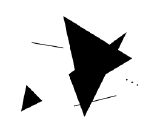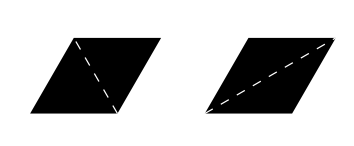20.2: Polygonal sets
- Page ID
- 23711
\( \newcommand{\vecs}[1]{\overset { \scriptstyle \rightharpoonup} {\mathbf{#1}} } \)
\( \newcommand{\vecd}[1]{\overset{-\!-\!\rightharpoonup}{\vphantom{a}\smash {#1}}} \)
\( \newcommand{\dsum}{\displaystyle\sum\limits} \)
\( \newcommand{\dint}{\displaystyle\int\limits} \)
\( \newcommand{\dlim}{\displaystyle\lim\limits} \)
\( \newcommand{\id}{\mathrm{id}}\) \( \newcommand{\Span}{\mathrm{span}}\)
( \newcommand{\kernel}{\mathrm{null}\,}\) \( \newcommand{\range}{\mathrm{range}\,}\)
\( \newcommand{\RealPart}{\mathrm{Re}}\) \( \newcommand{\ImaginaryPart}{\mathrm{Im}}\)
\( \newcommand{\Argument}{\mathrm{Arg}}\) \( \newcommand{\norm}[1]{\| #1 \|}\)
\( \newcommand{\inner}[2]{\langle #1, #2 \rangle}\)
\( \newcommand{\Span}{\mathrm{span}}\)
\( \newcommand{\id}{\mathrm{id}}\)
\( \newcommand{\Span}{\mathrm{span}}\)
\( \newcommand{\kernel}{\mathrm{null}\,}\)
\( \newcommand{\range}{\mathrm{range}\,}\)
\( \newcommand{\RealPart}{\mathrm{Re}}\)
\( \newcommand{\ImaginaryPart}{\mathrm{Im}}\)
\( \newcommand{\Argument}{\mathrm{Arg}}\)
\( \newcommand{\norm}[1]{\| #1 \|}\)
\( \newcommand{\inner}[2]{\langle #1, #2 \rangle}\)
\( \newcommand{\Span}{\mathrm{span}}\) \( \newcommand{\AA}{\unicode[.8,0]{x212B}}\)
\( \newcommand{\vectorA}[1]{\vec{#1}} % arrow\)
\( \newcommand{\vectorAt}[1]{\vec{\text{#1}}} % arrow\)
\( \newcommand{\vectorB}[1]{\overset { \scriptstyle \rightharpoonup} {\mathbf{#1}} } \)
\( \newcommand{\vectorC}[1]{\textbf{#1}} \)
\( \newcommand{\vectorD}[1]{\overrightarrow{#1}} \)
\( \newcommand{\vectorDt}[1]{\overrightarrow{\text{#1}}} \)
\( \newcommand{\vectE}[1]{\overset{-\!-\!\rightharpoonup}{\vphantom{a}\smash{\mathbf {#1}}}} \)
\( \newcommand{\vecs}[1]{\overset { \scriptstyle \rightharpoonup} {\mathbf{#1}} } \)
\( \newcommand{\vecd}[1]{\overset{-\!-\!\rightharpoonup}{\vphantom{a}\smash {#1}}} \)
\(\newcommand{\avec}{\mathbf a}\) \(\newcommand{\bvec}{\mathbf b}\) \(\newcommand{\cvec}{\mathbf c}\) \(\newcommand{\dvec}{\mathbf d}\) \(\newcommand{\dtil}{\widetilde{\mathbf d}}\) \(\newcommand{\evec}{\mathbf e}\) \(\newcommand{\fvec}{\mathbf f}\) \(\newcommand{\nvec}{\mathbf n}\) \(\newcommand{\pvec}{\mathbf p}\) \(\newcommand{\qvec}{\mathbf q}\) \(\newcommand{\svec}{\mathbf s}\) \(\newcommand{\tvec}{\mathbf t}\) \(\newcommand{\uvec}{\mathbf u}\) \(\newcommand{\vvec}{\mathbf v}\) \(\newcommand{\wvec}{\mathbf w}\) \(\newcommand{\xvec}{\mathbf x}\) \(\newcommand{\yvec}{\mathbf y}\) \(\newcommand{\zvec}{\mathbf z}\) \(\newcommand{\rvec}{\mathbf r}\) \(\newcommand{\mvec}{\mathbf m}\) \(\newcommand{\zerovec}{\mathbf 0}\) \(\newcommand{\onevec}{\mathbf 1}\) \(\newcommand{\real}{\mathbb R}\) \(\newcommand{\twovec}[2]{\left[\begin{array}{r}#1 \\ #2 \end{array}\right]}\) \(\newcommand{\ctwovec}[2]{\left[\begin{array}{c}#1 \\ #2 \end{array}\right]}\) \(\newcommand{\threevec}[3]{\left[\begin{array}{r}#1 \\ #2 \\ #3 \end{array}\right]}\) \(\newcommand{\cthreevec}[3]{\left[\begin{array}{c}#1 \\ #2 \\ #3 \end{array}\right]}\) \(\newcommand{\fourvec}[4]{\left[\begin{array}{r}#1 \\ #2 \\ #3 \\ #4 \end{array}\right]}\) \(\newcommand{\cfourvec}[4]{\left[\begin{array}{c}#1 \\ #2 \\ #3 \\ #4 \end{array}\right]}\) \(\newcommand{\fivevec}[5]{\left[\begin{array}{r}#1 \\ #2 \\ #3 \\ #4 \\ #5 \\ \end{array}\right]}\) \(\newcommand{\cfivevec}[5]{\left[\begin{array}{c}#1 \\ #2 \\ #3 \\ #4 \\ #5 \\ \end{array}\right]}\) \(\newcommand{\mattwo}[4]{\left[\begin{array}{rr}#1 \amp #2 \\ #3 \amp #4 \\ \end{array}\right]}\) \(\newcommand{\laspan}[1]{\text{Span}\{#1\}}\) \(\newcommand{\bcal}{\cal B}\) \(\newcommand{\ccal}{\cal C}\) \(\newcommand{\scal}{\cal S}\) \(\newcommand{\wcal}{\cal W}\) \(\newcommand{\ecal}{\cal E}\) \(\newcommand{\coords}[2]{\left\{#1\right\}_{#2}}\) \(\newcommand{\gray}[1]{\color{gray}{#1}}\) \(\newcommand{\lgray}[1]{\color{lightgray}{#1}}\) \(\newcommand{\rank}{\operatorname{rank}}\) \(\newcommand{\row}{\text{Row}}\) \(\newcommand{\col}{\text{Col}}\) \(\renewcommand{\row}{\text{Row}}\) \(\newcommand{\nul}{\text{Nul}}\) \(\newcommand{\var}{\text{Var}}\) \(\newcommand{\corr}{\text{corr}}\) \(\newcommand{\len}[1]{\left|#1\right|}\) \(\newcommand{\bbar}{\overline{\bvec}}\) \(\newcommand{\bhat}{\widehat{\bvec}}\) \(\newcommand{\bperp}{\bvec^\perp}\) \(\newcommand{\xhat}{\widehat{\xvec}}\) \(\newcommand{\vhat}{\widehat{\vvec}}\) \(\newcommand{\uhat}{\widehat{\uvec}}\) \(\newcommand{\what}{\widehat{\wvec}}\) \(\newcommand{\Sighat}{\widehat{\Sigma}}\) \(\newcommand{\lt}{<}\) \(\newcommand{\gt}{>}\) \(\newcommand{\amp}{&}\) \(\definecolor{fillinmathshade}{gray}{0.9}\)Elementary set on the plane is a set of one of the following three types:
- one-point set;
- segment;
- solid triangle.

A set in the plane is called polygonal if it can be presented as a union of a finite collection of elementary sets.
Note that according to this definition, the empty set \(\emptyset\) is a polygonal set. Indeed, \(\emptyset\) is a union of an empty collection of elementary sets.
A polygonal set is called degenerate if it can be presented as union of finite number of one-point sets and segments.
If \(X\) and \(Y\) lie on opposite sides of the line \((AB)\), then the union \(\blacktriangle AXB\cup \blacktriangle BYA\) is a polygonal set which is called solid quadrangle \(AXBY\) and denoted by \(\blacksquare AXBY\). In particular, we can talk about solid parallelograms, rectangles, and squares.

Typically a polygonal set admits many presentations as a union of a finite collection of elementary sets. For example, if \(\square AXBY\) is a parallelogram, then
\(\blacksquare AXBY=\blacktriangle AXB\cup \blacktriangle AYB=\blacktriangle XAY\cup \blacktriangle XBY.\)
Show that a solid square is not degenerate.
- Hint
-
Assume the contrary: that is, a solid square \(\mathcal{Q}\) can be presented as a union of a finite collection of segments \([A_1B_1], \dots, [A_nB_n]\) and one-point sets \(\{C_1\}, \dots, \{C_k\}\).
Note that \(\mathcal{Q}\) contains an infinite number of mutually nonparallel segments. Therefore, we can choose a segment \([PQ]\) in \(\mathcal{Q}\) that is not parallel to any of the segments \([A_1B_1], \dots, [A_nB_n]\).
It follows that \([PQ]\) has at most one common point with each of the sets \([A_iB_i]\) and \(\{C_i\}\). Since \([PQ]\) contains infinite number of points, we arrive at a contradiction.
Show that a circle is not a polygonal set.
- Hint
-
First note that among elementary sets only one-point sets can be subsets of the a circle. It remains to note that any circle contains an infinite number of points.
For any two polygonal sets \(\mathcal{P}\) and \(\mathcal{Q}\), the union \(\mathcal{P}\cup\mathcal{Q}\) as well as the intersection \(\mathcal{P} \cap \mathcal{Q}\) are also polygonal sets.
- Proof
-
Let us present \(\mathcal{P}\) and \(\mathcal{Q}\) as a union of finite collection of elementary sets \(\mathcal{P}_1,\dots,\mathcal{P}_k\) and \(\mathcal{Q}_1,\dots,\mathcal{Q}_n\) respectively.

Note that
\(\mathcal{P}\cup\mathcal{Q} = \mathcal{P}_1 \cup \dots \cup \mathcal{P}_k \cup \mathcal{Q}_1 \cup \dots \cup \mathcal{Q}_n.\)
Therefore, \(\mathcal{P}\cup\mathcal{Q}\) is polygonal.
Note that \(\mathcal{P}\cap \mathcal{Q}\) is the union of sets \(\mathcal{P}_i\cap \mathcal{Q}_j\) for all \(i\) and \(j\). Therefore, in order to show that \(\mathcal{P}\cap \mathcal{Q}\) is polygonal, it is sufficient to show that each \(\mathcal{P}_i\cap \mathcal{Q}_j\) is polygonal for any pair \(i\), \(j\).
The diagram should suggest an idea for the proof of the latter statement in case if \(\mathcal{P}_i\) and \(\mathcal{Q}_j\) are solid triangles. The other cases are simpler; a formal proof can be built on Exercise 20.1.1.
A class of sets that is closed with respect to union and intersection is called a ring of sets. The claim above, therefore, states that polygonal sets in the plane form a ring of sets.


